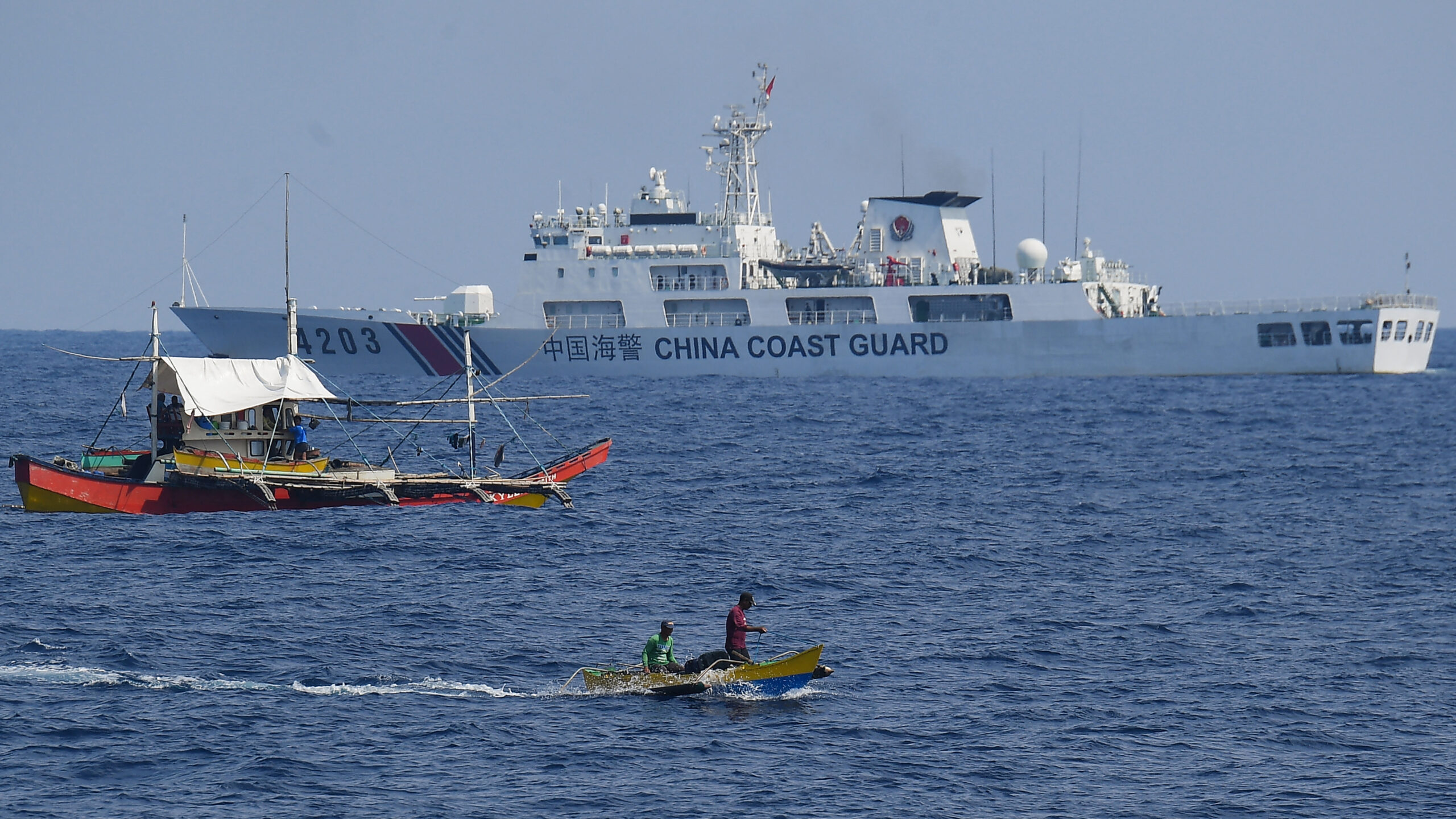
A China Coast Guard ship monitors Philippine fishermen aboard their wooden boats during the distribution of fuel and food to fishers by the civilian-led mission Atin Ito (This Is Ours) Coalition, in the disputed South China Sea on May 16, 2024. A Philippine boat convoy bearing supplies for Filipino fishers said they were headed back to port May 16, ditching plans to sail to a Beijing-held reef off the Southeast Asian country after one of their boats was “constantly shadowed” by a Chinese vessel. FILE PHOTO/Agence France-Presse
MANILA, Philippines — The number of suspected Chinese maritime militia and coast guard vessels in Scarborough (Panatag) Shoal sharply decreased while all of Beijing’s warships also left after the trip of a civilian convoy there, according to the Philippine Navy data released on Tuesday.
Only 19 Chinese ships were spotted around Panatag Shoal from May 21 to 27, including five China Coast Guard vessels (CCGV) and 14 Chinese maritime militia vessels (CMMV). No People’s Liberation Army-Navy (PLAN) warships were monitored this time.
This total was a sharp decrease from May 14 to 20, when there were a total of 55 Chinese ships in the shoal, including nine CCGVs, four PLAN warships, and 42 CMMVs.
READ: ‘Atin Ito’ convoy breaches China’s blockade at Bajo de Masinloc
The civilian convoy of Atin Ito to the atoll began on May 15 and lasted until May 17. It aimed to distribute supplies to Filipino fishermen and assert the Philippines’ rights to the disputed waterway.
The Philippine Coast Guard previously flagged the huge deployment of CCGVs during the civilian mission, calling it an “overkill.”
The mother boat of the Atin Ito convoy, where INQUIRER.net was aboard, was blocked by three CCGVs from entering the 12 nautical mile (NM) “territorial waters” of Panatag Shoal, only coming as close as 50 NM away from the atoll.
China seized control of Panatag Shoal’s lagoon in 2012 after CCG’s standoff with Philippine vessels.
READ: China’s new trespassing rule is illegal, illegitimate — experts
Their actions align with Beijing’s assertion of sovereignty in almost the entire South China Sea, including the West Philippine Sea, even if such a claim has been effectively invalidated by a July 2016 international tribunal ruling from a case filed by Manila in 2013.
This landmark decision also included Panatag Shoal, which was declared a traditional fishing ground that should be shared by the Philippines, China, and Vietnam.
In apparent violation of this ruling, CCG prevents Filipino fishermen from entering the territorial waters of Panatag Shoal.
China also released a unilateral anti-trespassing policy in South China Sea, which encroaches most of the West Philippine Sea, coinciding with the civilian mission in Panatag Shoal, according to a South China Morning Post report.


